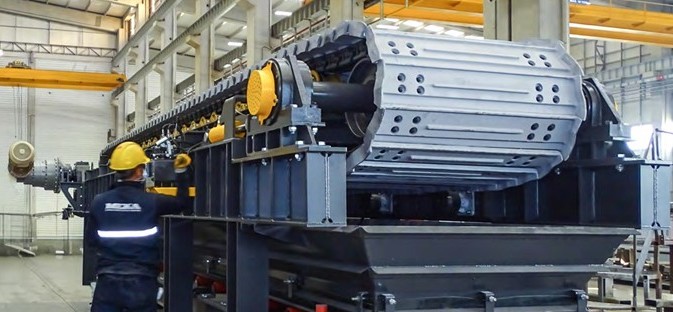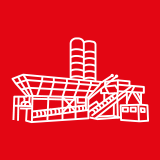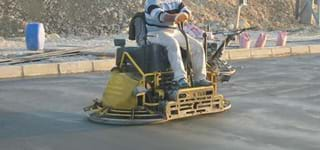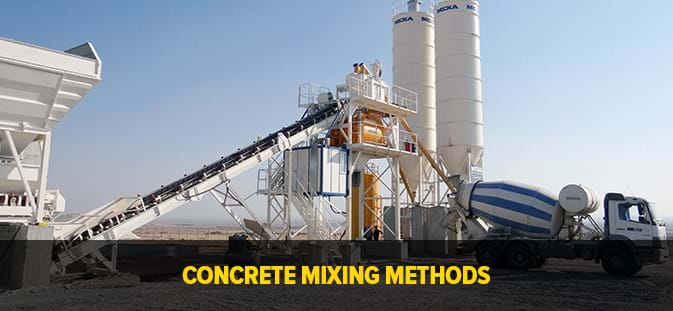The Ultimate Guide to Apron Feeders

What is an Apron Feeder?
Apron Feeders are mechanical devices used to evenly transfer materials to crushers or other equipment. They are commonly used for feeding primary crushers but also work well in primary, secondary, and tertiary settings as primary feeders, for primary crusher discharge, in stockpiles, at rail unloading stations, and in storage bins. These feeders are especially suitable for handling hard, abrasive, and tough materials, withstanding extreme impacts. They can manage large lumps of material and cater to both small and large capacity needs
Apron Feeders Historical Development

Late 19th Century: The first use of feeders dates back to this period, with apron feeders emerging as a solution for the handling and processing of materials.
Early 20th Century: Utilized in cement and mining industries.
First Quarter of 21st Century: Became the most widely used feeder for first-stage crushers.
Apron Feeder Design and Components
Head Shaft Assembly: An Apron Feeder has a strong head shaft with chain sprockets that are built in sections and connected to a hub. This assembly is supported by durable bearings that are greased from end caps. The feeder's stability is maintained by stop blocks welded to the frame. Bearings are sealed to keep out dirt, and their housings are securely fixed to the frame for handling heavy loads
Main Frame: The main frame of the an Apron Feeder is built to handle tough loads and last long. It's made of welded steel shapes, forming a sturdy base for the working parts. The frame's large main parts are designed in sections for cheaper shipping and easier installation. This also allows it to be moved through mine shafts and tunnels.
Tail Idler Takeup Assembly: Dozer idlers in an Apron Feeder help the chain and flights return smoothly to the working surface without needing maintenance. These idlers are permanently sealed and sized to fit the chain. They are attached to an adjustment framework and bolted to the feeder's frame, with large screw threads for easy adjustment. This setup requires very little adjustment throughout the chain's lifespan.
Carry Rollers: Dozer track rollers on an Apron Feeder are lubricated for life, offering a maintenance-free way to support heavy loads. These rollers are placed close together near the hopper to prevent the chain from sagging under weight. They are more spaced out in the feeder's carrying area. Parts of the support channels can be removed easily, making it simpler to replace rollers if necessary
Chain: Dozer chains are used for their strength and dependability in tough conditions. They are designed with safety factors for long-term, continuous service. Common sizes include FL4, D4, D7, D9, D10, and D11
Return Rollers: Dozer top rollers on a Apron Feeder are permanently lubricated, offering a maintenance-free way to carry loads on the return side. These rollers are spaced to support the chain-flight assembly well. For easy maintenance, the return rollers can be replaced from outside the frame
Cast Flights: Cast manganese steel flights are used on D4 and bigger chains. They have special beads to limit leakage and help grip the material. The ends are smooth for skirting interaction, and extra wear pads on the bottom protect against heavy load impacts.
Drive Sprockets: Chain drive sprockets come in three parts and are bolted to a hub. Their wide, reversible teeth are designed to be half a tooth in size. All teeth make contact after the sprocket turns twice. Since the sprockets are in three segments, one third can be flipped over without needing to remove the chain.
Dribble Conveyor: To catch fine, dry material that might slip through the flights, a dribble belt can be used. This belt is made with standard conveyor parts and moves at about 20 feet per minute (6 meters per minute).
Lubrication: Lubrication is needed only for the head shaft of an Apron Feeder, as other components are sealed permanently. Each feeder includes standard lubrication lines leading to a common area on the frame for easy access. Optionally, automatic lubrication equipment can be provided.
Pull Cords/Motion Switch: An Apron Feeders are equipped with standard emergency stop pull cords and a zero-speed sensing switch.
What are the Advantages of Apron Feeders?
Versatile in capacity and size handling.
- Suitable for hard, abrasive, moist, and clay materials.
- Long service life with minimal maintenance.
- Can operate horizontally or inclined.
- Offers accurate feeding rate.
Apron Feeder Working Principle
Apron Feeders move materials from a hopper to their destination at a steady speed. They have a frame, undercarriage parts, a head shaft, tail shaft, flights, and a motor. The chain on the undercarriage wraps around the head and tail shafts, and the flights, attached to the chain, travel over undercarriage rollers. Typically, an Apron Feeder is placed below a hopper's discharge opening. As the head shaft turns, it pulls material from the hopper along with the flights. The opening's size and the flights' speed control the flow of material. These feeders are customizable for different uses and installation needs, allowing adjustments in the material stream, like its depth, to achieve the desired material flow.
Industrial Usage
The Apron Feeder serves various roles in material handling, such as acting as a Primary Feeder, assisting in Primary Crusher Discharge, functioning in Stockpile Feeding, aiding in Rail Unloading, and facilitating the movement of materials from Storage Bins
What should we consider when choosing an Apron Feeder?
- Material Type: Identify the type of material being handled.
- Bulk Density: Determines the speed and power needed for the desired tonnage per hour.
- Material Size: Note height, width, and depth.
- Material Temperature: Consider the temperature of the material.
- Moisture Content: Factor in the moisture level.
- Maximum Feed Size: Important for determining feeder size.
- Material Characteristics: Is it free-flowing, sticky, non-abrasive, mildly abrasive, or very abrasive?
- Capacity Desired: Specify in tons per hour.
- Feeder Width: Ideally, twice the maximum feed size to prevent bridging.
- Feeder Length: Optimal length for required duty and space efficiency.
- Operation Angle: Note the angle of operation in degrees.
- Loading Method: How will the feeder be loaded (e.g., truck, end-loader)?
- Discharge Destination: Where will the feeder discharge (e.g., crusher, conveyor)?
- Feed Rate: Define the required feed rate.
- Available Space: Consider the space where the feeder will be placed.
- Drive Type: Choose between fixed speed, variable speed, hydraulic power, or electric motor.
- Site Elevation and Temperature: Factor in the environmental conditions.
- Electrical Characteristics: Consider site's electrical setup
Apron Feeder Maintenance Practices
Regular maintenance involves lubrication of bearings, tightening of bolts, replacement of worn parts, and cleaning the working area. Attention should be paid to unusual sounds or vibrations, which might indicate a malfunction. Overall, apron feeders are essential in heavy-duty industrial settings, providing efficient and reliable material handling for a variety of challenging materials.





